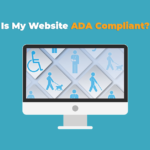So you’re a successful business in your home country, but you want to start expanding your enterprise across the globe. You already understand the basics of SEO, but are stumped when it comes to international SEO.
Where does the soon-to-be-global business begin?
SEO is all about being found. If nobody finds your site, how can you expand as a business? This is even harder if you’re expanding into the global market.
If only there were a beginner’s guide written by an experienced full-service digital marketing agency…
Oh wait, now there is!
Your International SEO Checklist
International SEO requires a significant time investment, so before you overhaul your strategy, you need to find out whether or not it’s worth it:
Ask yourself a few important questions about your business and who you’re targeting:
- Are you targeting another country or another language?
- Do you already receive organic traffic from that location?
- Are you willing to set up a localized hosting server?
The answers to these questions determine whether or not it’s appropriate to do SEO for a global audience.
So let’s take a closer look at these questions.
Let’s say you’re a leading cosmetics brand operating in France.
Knowing that you could expand your sales by targeting consumers in other languages, you decide to target Italian and German speakers on your website. Would this be an appropriate time to optimize for an international presence?
Maybe, maybe not.
It really depends on where those Italian and German speakers live. Are you aiming for Italians and Germans in France? Or Italians and Germans in Italy and Germany?
When your goal is to target a multilingual audience within the same country, you don’t have to worry about international SEO. What you should do is tell Google about your multilingual pages.
You can do this by setting the HTML hreflang attribute in the head section of your page code.
What this tag does is to tell the search engine crawlbots that this page is an alternate-language version of another.
(While we’re on this subject, it’s important to point out that Bing uses language meta tags instead of hreflang attributes.)
This is critical to make sure that searchers find the correct page for their language/region. What it does not do, however, is say anything about the country you are targeting.
Based on your Google Analytics, are you already getting organic traffic from your target regions? Your answer gives you an idea as to whether or not it’s worth prioritizing an international SEO strategy.
If you already receive substantial organic traffic, you may want to increase that traffic – or maybe you’re satisfied already. If you receive none at all, however, then you probably need to step up your game. Or at least decide if it’s worth the investment in said stepping up.
Another factor is hosting:
Google doesn’t prioritize server location as a ranking factor as much as it did in the past.
The advent and popularity of CDNs, or content delivery networks, has decreased the importance of server location in determining where, geographically, a site calls home.
However, it’s still a factor for international SEO, due to different countries’ internet regulations. It may be worth investing in a localized server for hosting your content if you target, say, the Asian market.
Now if you’re in the US and your target is Canada or Mexico, this might not be as important, but it’s certainly something to consider.
Developing an International SEO Strategy
There are a few different strategies you can use to display content on your website:
You could, for example, make use of cookies to dynamically display your web page based on the origin of your inbound traffic. Google, however, recommends that you avoid doing this.
The dynamic-oriented design makes it harder for the Google crawlbots to index your website, which can hurt your SEO for both the local and international SERPs.
Instead, they recommend that you use different URLs to display international content.
Your URL and domain type are crucial elements in telling Google how to interpret your website.
If you’re not sure what I mean by “domain type” it’s simply the tail-end of your web address: “dot com” or “dot net” or any other domain type.
These types of domains, .com, .net or .org are called generic top level domains, or gTLDs. They don’t tell the search engine anything about the location of your content.
Aside from gTLDs, there are also ccTLDs – country code top level domains. These do specify your website’s location. Surely the answer to localization is right there, right? All you need to do is register your website with the appropriate ccTLD, right?
Well, it would be ideal – but those domains can be cost prohibitive. Luckily, you have other options available to localize your website. One choice, in fact, is to keep your gTLD the same:
Google Search Console lets you specify what country your gTLD website is targeting. There are also other URL and website structures you can use.
You can, for example, structure your site with geotargeted directories and subdomains instead. Geotargeting refers to structuring your website to a specific regional audience.
It covers everything from registering a ccTLD – such as “products.fr” – to creating a subdirectory or subdomain within your website for localized content.
Wait… subdomain? Subdirectory?
What are you talking about?
A subdomain is a portion of your web address, usually used to regionalize or subdivide the website into discrete parts. It’s sort of like a site within a site.
The structure of a subdomain is “[location.]website.com” – with everything in brackets (including the period) being the subdomain. The subdomain you’re probably most familiar with is “www.” which simply indicates that a site exists within the World Wide Web information space.
When you want to localize a website that has a gTLD, you can do so through a regionalized subdomain. The end result of using a subdomain is similar to a ccTLD, but can be accomplished without needing to purchase an expensive website specifically for international SEO.
The advantage to a subdomain is that it compartmentalizes your localized content within a microsite, one that is within the same domain as your main website.
However, the major disadvantage is that search engines typically view these sites as separate websites altogether. Meaning you may need to build up your SEO from the ground up.
A subdirectory, sometimes called a subfolder, is another option available for international localization. This creates a subsection within your domain that contains all localized content.
This is probably the easiest and cheapest method of localization, as it uses the exact same host and domain – making it much lower maintenance. Your subdirectory also inherits SEO ranking from the main domain site. Which is good.
But you lose some control over how your site shows up in SERPs for international searchers. Which is bad.
Really, the choice is a judgment call based on your resources, budget and time.
International SEO: Is it Worth it?
So now that we’ve covered the essential elements of an international SEO strategy, it’s time to ask yourself the important questions again:
Who are you targeting? How important is that market? Are you willing to build up SEO from the ground up?
You need to determine these answers for yourself before committing to a strategy.
Oh, and by the way.
If you’re interested in international SEO for your business, but aren’t sure how to implement it yourself: have I got the agency for you.












Leave a Reply